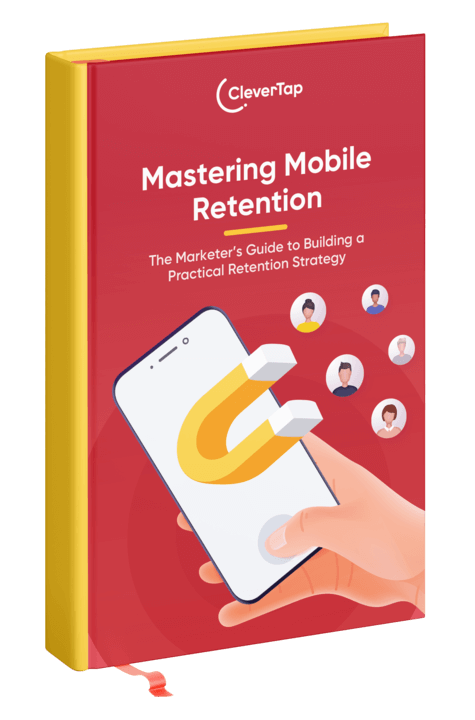Getting users to install your app is easy. The real test, however, is getting them to keep coming back. In 2022, around 50% of Android apps were uninstalled within 30 days of download—half of them within 24 hours. That’s why it’s important to focus on mobile app engagement strategies to curb high bounce rates.
With millions of apps available, you must take calculated risks to ensure your app is both downloaded and used. Don’t be afraid of pushing boundaries to enhance engagement. After all, high engagement is a necessity for your app’s survival and growth. Achieving that level of engagement requires audacity and innovation.
Let’s look at some high-risk, high-reward mobile app engagement strategies that can propel your app to success.
Use Unconventional Gamification Tactics
Gamification is a dynamic strategy that transforms the way users engage with apps. But today’s users expect gamified aspects of an app, so this alone isn’t enough.
For instance, productivity app Forest uses gamification to encourage users to use their phones less, not more. When you open the app, it plants a virtual tree. The tree grows as long as you keep the app open. But if you leave the app to browse your phone, the tree dies.
Unconventional app gamification tactics can be highly effective in engaging users and setting your app apart from the competition. Here are a few things you can do:
- Create a reverse leaderboard (with caution) that highlights the least skilled or engaged users, encouraging them to improve.
- Host contests where users create and submit content, such as artwork, videos, or short stories. Let the community vote on the best submissions instead of choosing it yourself.
- Try negative reinforcement, where users face consequences for inactivity, such as losing a virtual item. (Remember Farmville?)
- Allow users to collectively make decisions on your app’s content, direction, or storyline. This can make them feel more invested in the app’s development.
- Leave Easter eggs and hide surprises within your app. Encourage users to explore and discover these secrets.
- Introduce spot events with time-limited rewards. Users must act quickly to participate and earn rewards, creating a sense of urgency.
Risk: You may risk alienating users. Some may find these unconventional strategies confusing, frustrating, or unenjoyable, leading to churn and negative reviews. Overly intricate gamification elements can also overwhelm users.
Reward: Unique and unconventional gamification elements can capture user attention and keep them engaged for longer periods. It may even drive users toward in-app purchases or subscriptions.
How Mint adds gamification elements to its app.
Think Outside the Box With Social Media Marketing
Connecting your app to social media is a given. You must be present on social platforms like Facebook, Twitter, Instagram, or TikTok to spread the word about your product. But how do you cut through the noise and stand out? People usually follow personal interests on social media—they often don’t follow a brand until it grabs their attention with something creative or edgy.
For example, the fast-food restaurant chain Wendy’s is has become known for its sarcastic and sassy tweets. It often roasts competitors who challenge or criticize the brand. But authenticity matters here. Many have tried to follow Wendy’s recipe for social media success, only to fail miserably.
In addition, look for ways to adapt the latest memes and trends to your brand. Or start your own viral moment with a challenge. The ALS Association mastered this with its 2014 ice bucket challenge, which raised $115 million for the national office.
Risk: Roasting your users is a tricky marketing tactic. It can backfire quickly if not done well. Edgy content is polarizing. Some people may love it, while others may find it offensive. It’s also challenging to control the narrative once the content is out in the public domain.
Reward: An edgy social media persona for your brand means you’ll grab a lot of eyeballs. People will be talking about your brand, leading to massive levels of engagement in the form of likes, comments, shares, and retweets. Your brand recall will also be much higher.
Create and Maintain a User Community
Creating and maintaining a user community can ensure that you always have fresh content and reviews for your app. You’ll need to create a dedicated forum or even in-app community features. Encourage users to share relevant and valuable content. This could be user-generated how-to guides, tips and tricks, and more.
In addition, actively participate in discussions within your community. Respond to questions, comments, and feedback promptly and thoughtfully. Show that you value your users’ input.
The eCommerce platform Etsy does this really well. It has a forum along with dedicated moderators and community managers that constantly engage users with challenges and contests to keep the buzz going.
A live video on Amazon promoting liquidless laundry strips.
Risk: User-dependent mobile app engagement strategies give you less control over the quality of what gets posted. You may also have to deal with inappropriate, offensive, or low-quality, low-effort content that can harm your app’s reputation. Effective content moderation is essential, but it can be resource-intensive.
Reward: UGC gives you a rich variety of content to share. As a result, you can put out a diverse range of perspectives and experiences.
Implement Artificial Intelligence Features
Leveraging artificial intelligence (AI) as part of your mobile app engagement strategies can enhance user experience in several ways. The most important benefit is that AI enables personalization. It analyzes user data and behavior to tailor app content and recommendations. With AI-powered voice recognition and chatbots, users can have their questions addressed instantly.
In addition, streaming apps such as Netflix and Hulu use AI to deliver content efficiently. Their recommendation engine uses AI to analyze viewing history, preferences, and ratings. Then, the AI suggests movies and TV shows.
Risk: AI systems may have an inherent algorithm bias present in training data, which could lead to inaccurate outcomes. AI also needs significant investment in powerful computing resources. Whether you choose cloud resources or on-site servers, it won’t come cheap.
Reward: AI enables developers to tailor app content and recommendations based on individual preferences. This hyper-personalization can deliver more relevant and appealing content to each user.
Experiment With Augmented Reality Solutions
Augmented reality (AR) puts users in an interactive and engaging environment. It overlays digital information or objects onto the real world and creates an immersive experience like no other.
For instance, you can use AR as part of your gamification experience. It can also help with product visualization, where users can see how products would look or fit before making a purchase. This strategy can be a big differentiator for your app.
Google Maps is an AR pioneer, using the tech to offer real-time navigation instructions. Users simply hold up their phone’s camera, and AR overlays arrows, street names, and directions onto the real-world view. This makes navigation easier.
An ad from Google Maps showing how their app can help you discover new experiences around the world or around the corner, connect with places you care about, and navigate your world.
Risk: Developing AR features requires specialized skills and resources. Plus, creating 3D models, animation, and specialized content can be costly. What’s more, AR is quite power-intensive and rapidly drains a user’s smartphone battery. It also consumes a lot of data, which may cause a user to rapidly uninstall your app.
Reward: For ecommerce apps, augmented reality lets users visualize products in their real-world environment before making a purchase. It’s also a powerful tool for educational and training apps. Specifically, it enhances learning experiences and improves retention of information.
Master These Mobile App Engagement Strategies With CleverTap
Retaining users is much cheaper than acquiring new ones. For this, you need to engage your users in a meaningful way. Stand out from your competition with these bold mobile app engagement strategies.
Savvy marketers focus on smart engagement and retention tactics such as leveraging UGC, social media, and gamification. These may present a few risks, but they yield much higher retention rates.
Want to learn more about how to keep users engaged with your app? CleverTap is an all-in-one customer engagement platform. We’ve helped over 100 companies around the world unlock limitless customer lifetime value. Our new whitepaper, Mastering Mobile Retention, can help you highlight your app’s value and build new user habits during that first critical week after download. Download your free copy now.

Mastering Mobile App Engagement & Retention
Subharun Mukherjee 
Heads Cross-Functional Marketing.Expert in SaaS Product Marketing, CX & GTM strategies.
Free Customer Engagement Guides
Join our newsletter for actionable tips and proven strategies to grow your business and engage your customers.















































